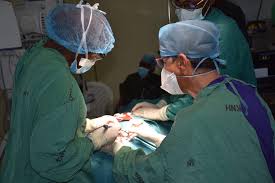In a remarkable leap forward for Kenya’s medical landscape, Kenyatta National Hospital (KNH) has conducted its first-ever cochlear implant surgeries, offering children with hearing impairments the chance to hear for the first time. This historic move, undertaken by a team of skilled local Ear, Nose, and Throat (ENT) surgeons, is supported by specialists from Morocco, highlighting the international collaboration behind this life-changing initiative.
The surgeries, which began on 3rd November 2025, are part of a week-long mission aimed at providing cochlear implants to 50 children, with eight surgeries already completed. The mission is part of a broader effort to transform KNH into a Centre of Excellence for hearing care in Kenya. These procedures were made possible by the donation of cochlear implant devices valued at over KSh 120 million, generously provided by the First Lady of Kenya, H.E. Mama Rachel Ruto, and Her Royal Highness Princess Lalla Asmaa of Morocco.
For the children receiving these implants, the surgeries signify much more than medical intervention. They offer a new world of sound, fostering communication, and enhancing quality of life. The ability to hear opens doors to learning, socialization, and full participation in society—milestones that many of these children had previously been denied. This initiative stands as a beacon of hope for families grappling with hearing impairments, symbolizing not only restored hearing but the promise of a more inclusive future.
The partnership between Kenya and Morocco is a testament to the power of global collaboration in advancing healthcare. By training local surgeons and providing state-of-the-art medical technology, the mission ensures that KNH is well-positioned to continue serving as a regional leader in ear and hearing care. This achievement is a vital step in addressing the growing need for specialized healthcare services in Kenya, particularly for children with disabilities.
As the surgical mission continues through 7th November 2025, the medical community is eager to see how these interventions will change the lives of many young patients, paving the way for a future where hearing care is accessible to all.

